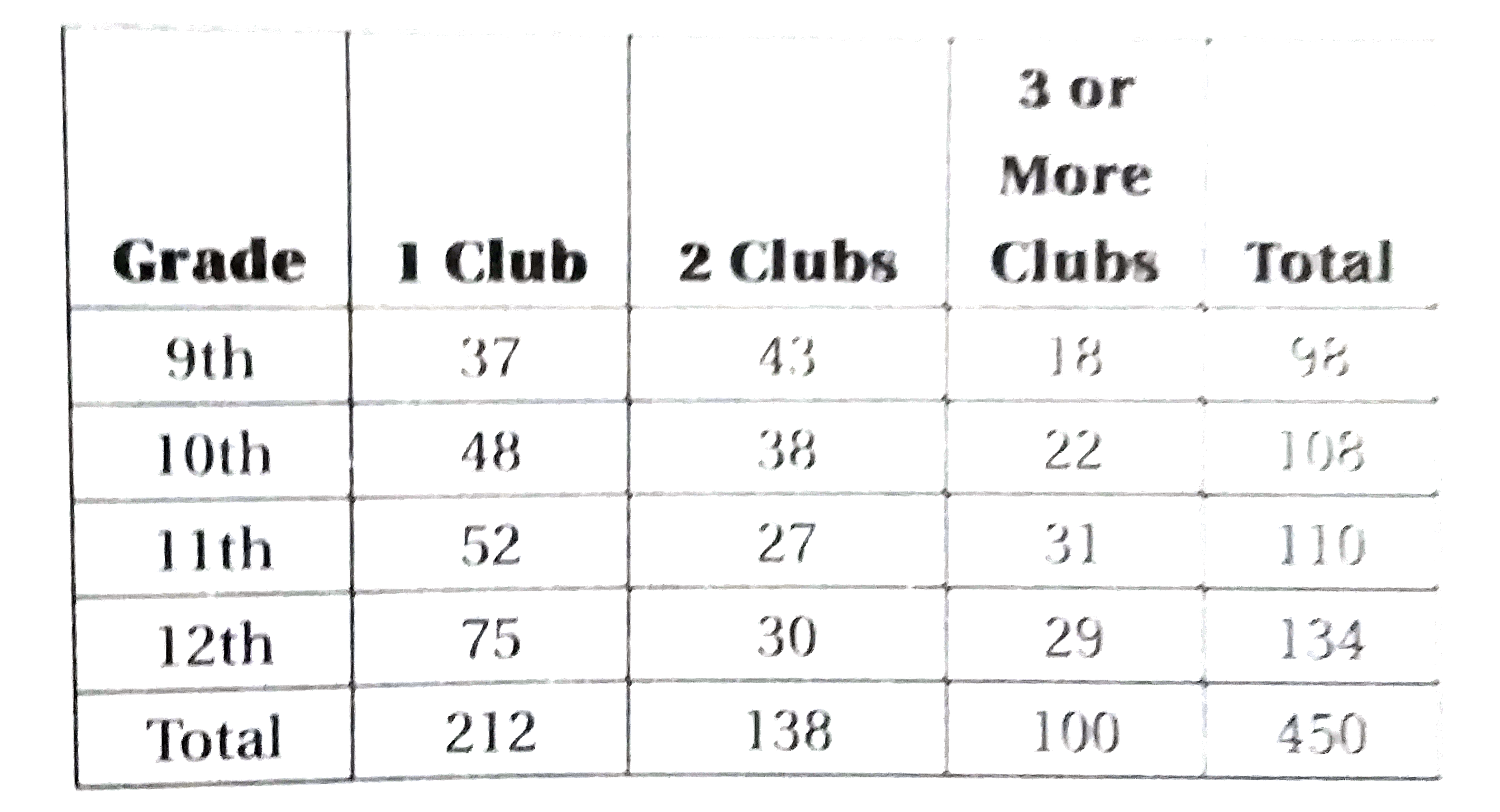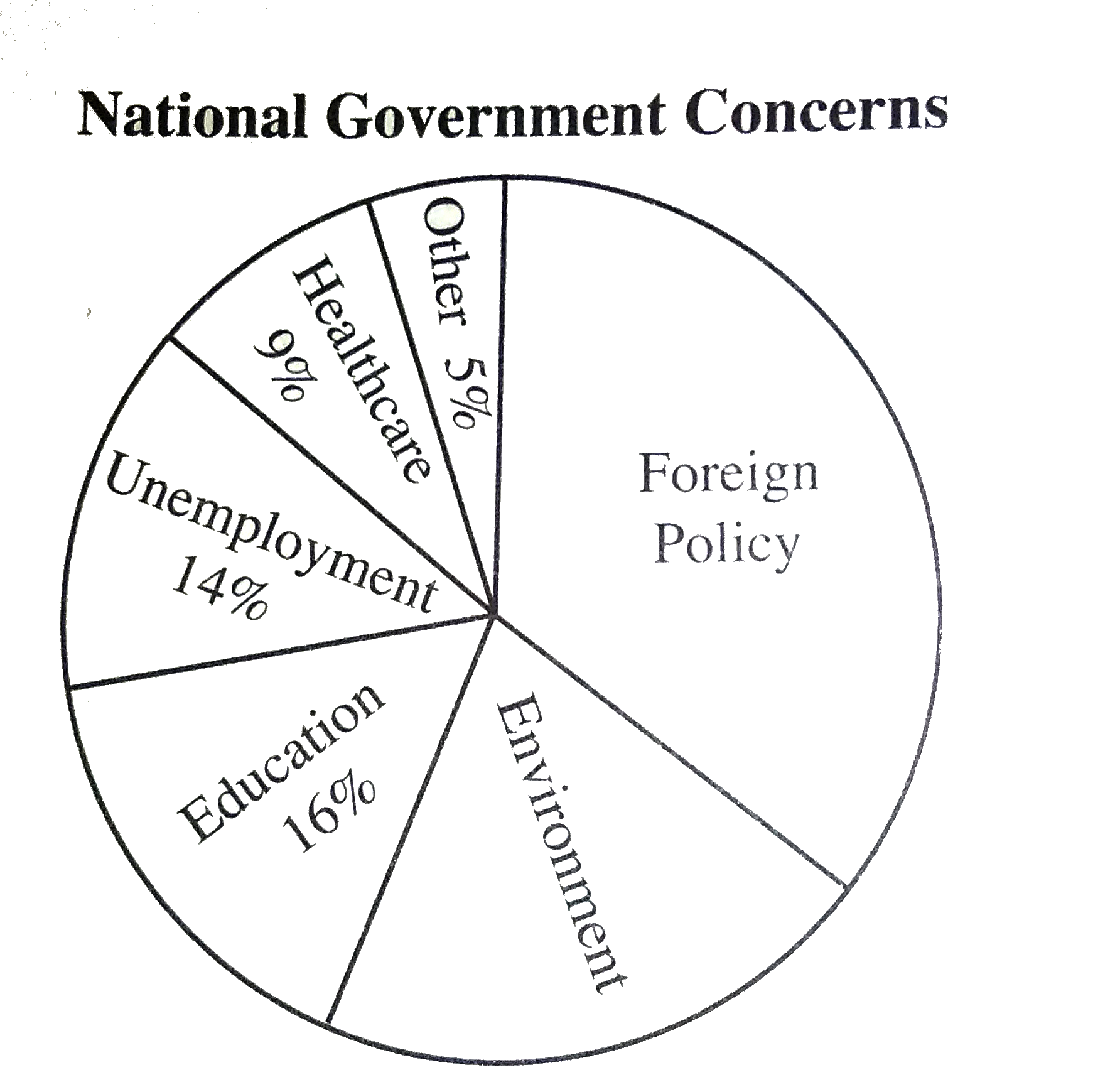40% of all high school students hate roller coasters, the rest love them. 20% of those students who love roller coasters own chinchillas. What percentage of students love roller coasters but do not own a chinchilla?
The correct Answer is:48%
Step by step video, text & image solution for 40% of all high school students hate roller coasters, the rest love them. 20% of those students who love roller coasters own chinchillas. What percentage of students love roller coasters but do not own a chinchilla? by Maths experts to help you in doubts & scoring excellent marks in Class 12 exams.
Similar Questions

Question 4-6 refer to the above table, which summarizes the result of a survey of the student body of a high school about club membership in which each student enrolled in the high school enumerated the clubs in which they were members.
Q. If 28% of the students who are enrolled in this school belong to at least two clubs, how many students who are enrolled in this school did not participate in the survey?View SolutionIn the International Oxford School, all students play at least one of the two games rugby and baseball . 40% of all students play both rugby and baseball. If 20% of the students who play baseball do not play rugby , then what is the percentage of all students who plya baseball ?
View Solution
Knowledge Check
- Question 1 - Select One
The Crestview High School student body is made up only of freshmen , sophomores , juniors, and seniors . 25% of the students are freshmen , 35% are sophomores , and 20% are juniors . If no student can be considered to be in two classes, and there are 150 seniors , how many students make up the Crestview High School student body ?
A230B500C600D750 - Question 2 - Select One
The Harrisburg Recreation Center recently changed its hours to open 1 hour later and close 3 hours later than it had previously. Residents of Harrisburg age 16 or older were given a survey and 560 residents replied. The survey asked each resident his or her student status (high school, college, or nonstudent) and what he or she thought about the change in hour (approve, disapprove, or no opinion). The results are summarized in the table below.

After constructing the table, it was discovered that the student status of 15 residents who replied that they approved had been incorrectly classified as nonstudents. After correcting the errors, exactly 60% of the college students had replied that they approved. To the nearest 1%, what percent of high school students replied that they approved?A0.6B0.67C0.7D0.75 - Question 3 - Select One
Keep Student Volunteering Voluntary
A growing number of public schools in the United States require students to complete community service hours to graduate. Such volunteering, be it helping at a local animal shelter, 12 when they pick up litter––––––––––––––––––––––––––, or working at a health-care facility, has obvious benefits for the community it serves and teaches students important life skills. But critics say that making volunteerism compulsory misses the point of the act.
13 By its very definition–––––––––––––––––––––––, volunteer work is done willingly. By requiring students to do community service in order to graduate, school 14 officials’ are taking away students’––––––––––––––––––––––––––––––––––––– choice to give up their time for nonprofit activities, making volunteerism less meaningful and pleasurable. According to a psychological concept called the reactance theory, the loss of freedom in choosing an activity can cause a negative reaction. For instance, instead of focusing on the good they are doing, students may become resentful of the demands that compulsory volunteering places on their schedules.
Proponents of compulsory 15 volunteering who are in favor of it––––––––––––––––––––––––––––––––––––– point out that it allows young people to garner the benefits that volunteering offers. Students who volunteer report increased self-esteem, better relationship-building skills, and 16 increasingly busy schedules––––––––––––––––––––––––––––––. Some studies have also found that students who do community service are more likely to volunteer as adults, and thus 17 effect–––––– society positively over the course of many years.
However, most research looks at students who volunteer in general, not making a distinction between students who are required to volunteer by their schools and those who volunteer willingly. One recent study by Sara E. Helms, assistant professor of economics at Samford University in Birmingham, Alabama, did focus specifically on 18 mandatory–––––––––––– volunteering. She found that students who were required to volunteer rushed to complete their service hours in early high 19 school, they then––––––––––––––––––– did significantly less regular volunteer work in the twelfth grade 20 than the service hours of those––––––––––––––––––––––––––––––––– not required to volunteer. Helms concluded that compulsory volunteering does not necessarily create lifelong volunteers.
Instead of requiring students to volunteer, schools 21 have to recognize that not all students are equally well suited to the same activities–––––––––––––––––––––––––––––––––––––––––––––––––––––––––––––––––––––––––––––––––––––––––. Many studies show that when schools simply tell students about opportunities for community service and connect them with organizations that need help, more students volunteer of their own free will. 22ANO CHANGEBto pick up litter,Clitter collection,Dpicking up litter,
65% of the students at a particular school take language classes. Of those students, 40% have studied more than one language. If there are 300 students at the school, how many have studied more than one language?
(A) 78
(B) 102
(C) 120View Solution
Margo surveyed all the students in the government classes at her school to see what they though should be the most important concern of a national government. The result of the survey are shown in the figure above. If the ratio of students who answered "Foreign Policy" to those who answered " Environmnent" was 5:3, what percentage of the students answered "Enviroment"?View SolutionOf all the students in a school, it is known that 30% have 100% attendance and 70% students are irregular. Previous year results report that 70% of all students who have 100% attendance attain A grade and 10% irregular students attain A grade in their annual examination. At the end of the year, one student is chosen at random from the school and he was found to have an A grade. What is the probability that the student has 100% attendance ? Is regularity required in school ? Justify your answer.
View SolutionOf the students in a college, it is known that 60% reside in hostel and 40% day scholars (not residing in hostel). Previous year results report that 30% of all students who reside in hostel attain ‘A’ grade and 20% of day cholars attain ‘A’ grade in their annual examination. At the end of the year, one student is chosen at random from the college and he has an ‘A’ grade, what is the probability that the student is a hosteler?
View SolutionIn a class of 40 students, ratio of students who like badminton to those who like cricket is 3:8and the ratio of students who like tennis to those who like cricket is 2:5. Which is the more loved sport in the class after cricket ?
View Solution

